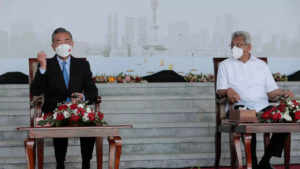Lessons from Sri Lanka crisis: How not to go green, plus how not to do business with China
Posted on February 22nd, 2022
Courtesy The Times of India
The loss of tourism caused by the pandemic, no doubt dealt Sri Lanka a more severe blow than to economies for which it is a less critical foreign-exchange earner. Pre-pandemic tourism amounted to more than 10% of the country’s GDP. But if today the country is struggling to pay for fuel imports, the shortage of which is having a cascading effect, and is on the brink of a sovereign bond default, the government’s ill-calculated policies have as much to do with it as the pandemic.
Before the pandemic, populist tax policy changes by the newly-installed Gotabaya Rajapaksa government (such as slashing the VAT rate) set off a decline in revenue, at a time when public finances were already fragile. Then, in April 2021, even as the pandemic had weakened the economy further, President Rajapaksa declared that import of chemical fertilizers would soon be stopped completely. Whether this was intended to promote organic farming or to save dollars from flowing out of the country, it crushed farmer sentiment. Prices of food and basic items have shot up since.

A big import order of organizer fertilizer from a Chinese company has opened a new can of worms, with its quality, price and payment all having become bitterly contested. China anyway accounts for around 10% of Sri Lanka’s foreign debt, with a notable part of this borrowing sunk into costly white elephant projects. It remains to be seen if Sri Lankan appeals to restructure this debt will be heeded with generosity, better late than never. Meanwhile, India is extending a $1 billion line of credit. For many within Sri Lanka, the writing is on the wall that the country should now turn to the IMF – to put its economy back on track with discipline. This will be a bitter pill for the government but it has largely itself to blame. It’s been a case study of how not to govern.